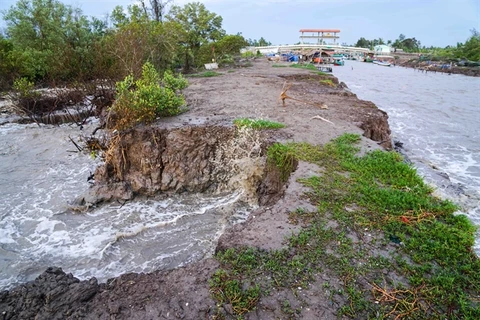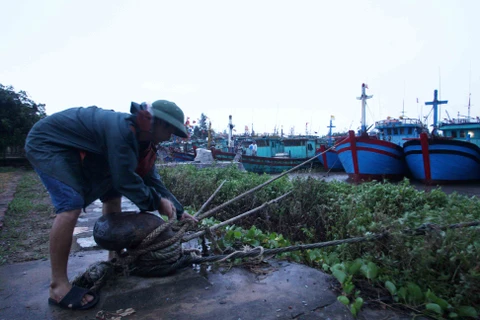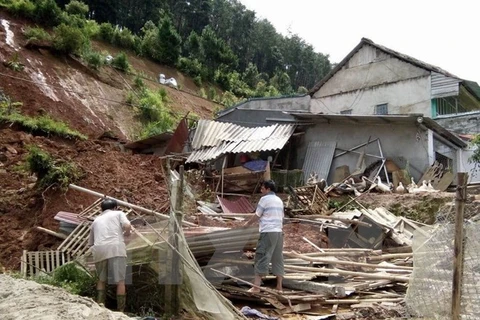Da Nang (VNA) – The Japan International Cooperation Agency and the Institute of Transport Science and Technology (ITSC) under the Ministry of Transport jointly held a conference in the central city of Da Nang on October 11 to review a project to develop landslide risk assessment technology along the transportation arteries in Vietnam.
The project is part of a six-year cooperation programme with the Japanese side that will conclude in November this year.
According to Assistant Prof. Dr. Nguyen Xuan Khang, head of the ITSC and the project’s Vietnam director, said the Ministry of Transport approved the project in 2012 and assigned the institute to implement it until 2016.
The direct goal of the project was to reduce disasters caused by landslide along Vietnam ’s transport arteries through the development of risk assessment technologies, while its long-term objectives included the nationwide application of these technologies to ensure safety for main transport routes.
The project also installed landslide monitoring devices in Hai Van railway station, helping alert the Vietnam Railway Corporation and local government of landslide risks in the site to make necessary evacuation.
Meanwhile, Dinh Van Tien, director of the project’s management board, noted that Vietnam is facing a high risk of landslide, especially in mountainous areas, due to heavy rainfall and complicated terrain.
Japanese ODA-funded projects between 2011 and 2016 have help Vietnam train personnel and develop equipment and a standard system to assess landslide risks, contributing to preventing and reducing disasters in the future.
At the same time, Kieu Thuong, Vice Director of the Quang Nam-Da Nang Railway JSC, held that the landslide monitoring system in Hai Van pass will help the railway sector actively respond to natural disasters, ensuring the safety for passengers and their property.
According to the National Steering Committee for Storm and Flood Prevention and Control, 250 flash floods and landslides during 2000-2014 left more than 640 dead and missing, and injured about 350 others. Nearly 10,000 houses collapsed and more than 100,000 others were flooded. Floods also affected 75,000 hectares of rice and crops. Total losses were estimated at 150 million USD, the committee reported.-VNA

























